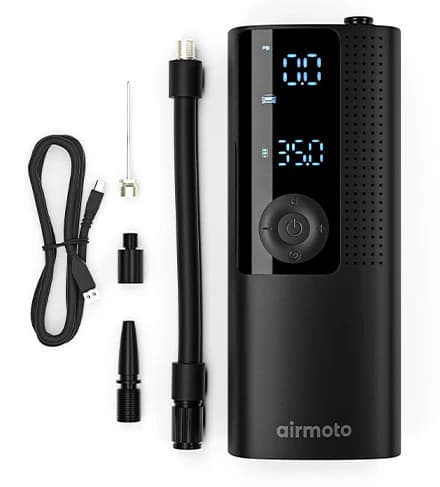- Published on
Sunday Robotics Founders on the "GPT Moment" for Physical AI and Breaking the Data Bottleneck

The robotics industry is currently navigating a period of immense hype, driven by the promise that the same transformer architectures that solved language can solve physical movement. But according to Tony Zhao and Cheng Chi, co-founders of Sunday Robotics, the revolution hasn't actually happened yet—at least, not for the consumer.
In a wide-ranging interview on the No Priors podcast with Sarah Guo, the founders offered a candid look inside their "full stack" strategy. While the company recently unveiled "Memo", a wheeled robot designed for domestic chores, the conversation revealed that their primary innovation isn't the hardware itself, but the data pipeline that powers it.
Here are the key takeaways from the interview, ranging from the death of teleoperation to the economics of a sub-$10,000 robot.
The "GPT" vs. "ChatGPT" Moment
When asked to contextualize the current state of embodied AI, CEO Tony Zhao offered a sobering analogy. He argues the industry is currently "in between the GPT moment and the ChatGPT moment."
"In the context of LLMs, what it means is that it seems like we have a recipe that can be scaled, but we haven't scaled up yet," Zhao explained. "We haven't scaled up so much so that we can have a great consumer product out of it."
This distinction is critical. While research papers (like Sunday's own ACT-1 and ALOHA work) have proven "signs of life" for transformer-based policies, the industry is waiting to see if adding massive amounts of data results in the same emergent intelligence that propelled OpenAI from GPT-3 to ChatGPT. Sunday is betting the company that it will.
The glovebox essential currently seeing a major price drop.
This compact lifesaver was a top seller during last year's Black Week, and considering the current deal, it’s a steal. The Airmoto replaces bulky, corded compressors with a sleek, cordless unit that fits in your glovebox. It features a digital gauge with auto shut-off (just set the PSI and walk away) and includes adapters for cars, bikes, and sports equipment. A perfect "peace of mind" tool for any driver.
As an Amazon Associate, we earn from qualifying purchases at no additional cost to you.
The End of Teleoperation?
Perhaps the sharpest divergence between Sunday and its competitors is their approach to teaching robots. Companies like 1X Technologies rely heavily on teleoperation—using VR headsets to control robots remotely, creating a 1:1 map between human and machine.
Cheng Chi, Sunday’s CTO, described teleoperation as a bottleneck that fundamentally limits scale. "It takes a PhD student a couple of hours to set it up in a lab," Chi noted, arguing that you cannot build a generalist robot if you only collect data in a controlled environment.
For Sunday Robotics, VR teleoperation is a dead end. The reason? Your hand is numb. @tonyzzhao explains the physics: In VR, you miss "force closure." You accidentally apply infinite force to soft objects because you get no feedback. Sunday's solution? Ditch the headset for a
Sunday’s alternative is the "Skill Capture Glove" (or UMI). By distributing these devices to over 500 regular users, the company claims to have collected nearly 10 million trajectories of real-world data.
"The glove form factor encourages people to do more dextrous and more natural movement," Chi said, noting that VR teleoperation often leaves the operator's hand feeling "numb," lacking force feedback. This results in "aggressive" robot movements that are unsafe for handling delicate items like wine glasses or folding socks.
Hardware: "Make Zero Assumptions"
The interview also shed light on why Sunday opted for a wheeled, non-humanoid design. The philosophy is one of radical simplification.
"Whenever we see something that we can accelerate with simplification, we'll go simplify that," Zhao said. He pointed to their gripper design: rather than five independent fingers, they combined them into a three-pronged clamp because "most of the time when we use those fingers, we use them together."
This functionalist approach extends to their skepticism of industry demos. Zhao warned viewers to "make zero assumptions" when watching viral robot videos.
"If you see a robot handing one drink to one person, first ask... is that autonomous or is that teleoperated?" Zhao advised. "If they didn't show it giving a slightly different color cup to the same person... it means that a robot can literally only pick up that single cup."
Sunday claims to be solving for "zero-shot generalization"—demonstrated by deploying Memo into Airbnb rentals it has never seen before to perform tasks like clearing tables.
The $10,000 Target
Regarding commercialization, the founders were transparent about the economics. Currently, internal prototypes cost between $6,000 and $20,000 to build. However, Zhao predicts that as they move from CNC machining and hand-painting to injection molding, the material cost will drop significantly.
"We can drastically reduce the material cost likely under $10k," Zhao stated. "And what it implies is that when we sell the robots, the price will be somewhere around it."
The company confirmed a 2026 Beta program, where selected households will receive robots for free to generate data and stress-test the system in the wild. While the timeline for a general public launch remains "uncomfortable guesses," Zhao was firm on one thing: it is not a decade away.
You can watch the full interview with No Priors below.
Deal: The "sweet spot" for electric toothbrushes.
The Sonicare 4100 is our top recommendation for anyone moving away from manual brushing. It skips the expensive gimmicks and focuses on the features that actually improve dental health: a pressure sensor to protect your gums, a 2-minute SmarTimer for consistent cleaning, and a battery that lasts two weeks on a single charge. It provides that dentist-clean feeling without the premium price tag.
As an Amazon Associate, we earn from qualifying purchases at no additional cost to you.
Share this article
Stay Ahead in Humanoid Robotics
Get the latest developments, breakthroughs, and insights in humanoid robotics — delivered straight to your inbox.

